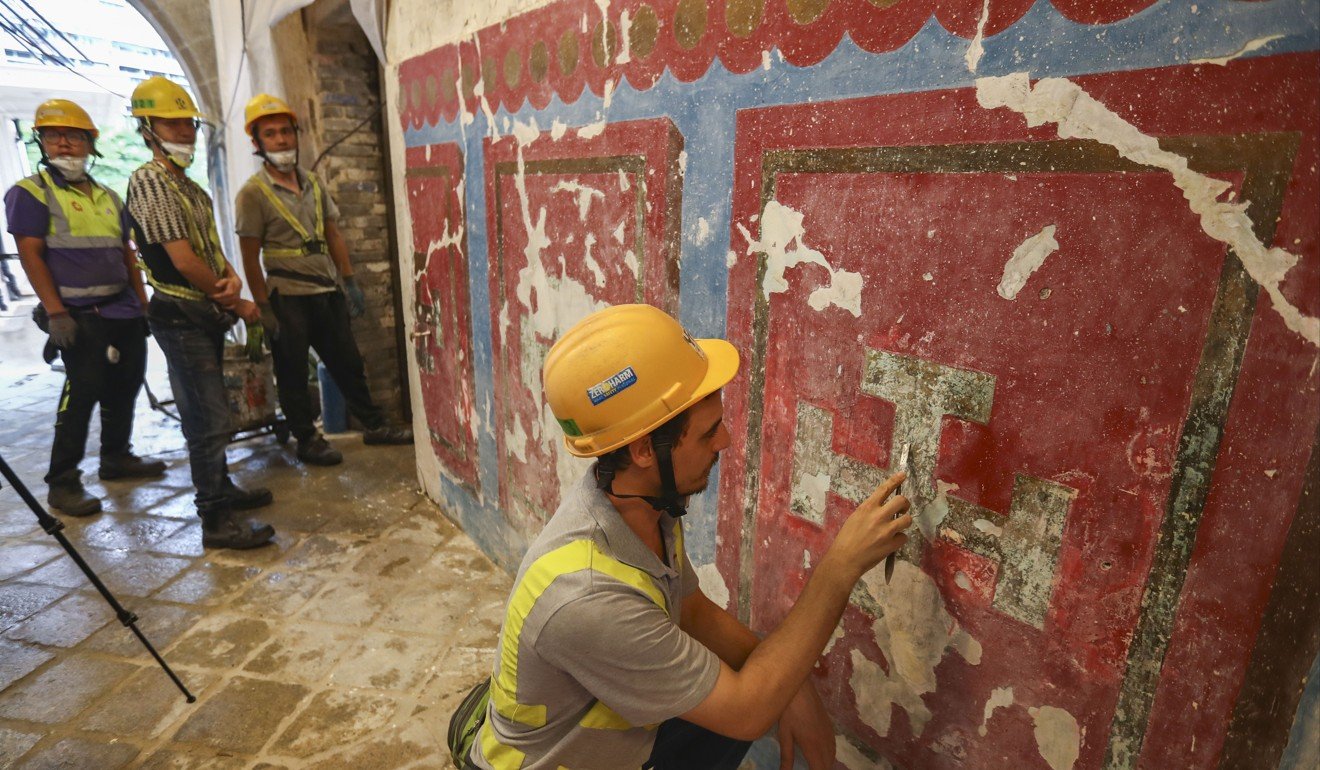
Former Hong Kong prison and police station turned arts complex to open this month after US$485 million, eight-year restoration
With city’s biggest heritage conservation project, covering 16 buildings of former Central Police Station and Victoria Prison, some of them 150 years old, nearly complete, public will have their first chance to look inside this month
Hongkongers can finally visit the restored Central Police Station and Victoria Prison compound. With the city’s most expensive and exacting heritage restoration project nearing completion after years, the cultural complex will open to the public on May 29.
The Hong Kong Jockey Club’s charities trust has spent HK$3.8 billion (US$485 million) so far on converting its 16 buildings – the oldest built 150 years ago – into a centre for heritage and contemporary art called Tai Kwun, the club’s chief executive officer said on Wednesday.
Conversion of Hong Kong police station to arts centre busts budget
“Our purpose is to conserve and restore the heritage site, showcase best practice in conservation, and promote and develop the arts in Hong Kong,” said Winfried Engelbrecht-Bresges.

The 13,600 square metre compound between Hollywood Road and Chancery Lane, Central district is in one of the areas of Hong Kong Island first settled by British colonists.
Its conservation and conversion is the biggest adaptive reuse of heritage yet undertaken in Hong Kong. Most of the city’s historic colonial architecture had been bulldozed for redevelopment well before the British government handed it back to China in 1997.



The buildings in the compound – including the formidable police headquarters along Hollywood Road that Cantonese speakers referred to colloquially as tai kwun, meaning “Big Station” – date from the 19th and early 20th centuries, and most of their original features have been preserved.
Some cells in the former Victoria Prison have been left intact to show visitors just how cramped conditions were for prisoners.


Also retained is the original prison yard where inmates such as Vietnamese independence leader Ho Chi Minh (jailed there in the 1930s) once exercised, and a large, 60-year-old mango tree in the parade ground that the Hong Kong Police Force insisted on preserving.
“It is a tree that meant a lot to police officers. Only a select few were allowed to go near it and to eat the fruit. We have seen it continue to bear fruit,” said Winnie Yeung Wing-yin, head of heritage at Tai Kwun.
Why the secrecy surrounding first art show at historic Hong Kong police station?
Two new blocks of contemporary design have been added on the southern side of the compound, designed by international architecture firm Herzog & de Meuron, that look radically different from their older surroundings.


“The new buildings reflect the texture of the heritage buildings and are also distinct, so that there is dialogue between old and new,” said Engelbrecht-Bresges.
Cheung Leong, executive director in charge of charities and community at the Jockey Club, said the project had been a lot more challenging than first thought because the buildings were in a worse state of repair than expected. “All the roofs had to be replaced and the foundations reinforced,” he said.

Hong Kong Palace Museum to cast its net wide for exhibits, says its chairman, Bernard Chan
The complex will have its soft opening on May 29 to test its capacity and crowd-control measures. Members of the public need to apply for a timed entry ticket, available from Thursday through website Taikwun.hk. The Jockey Club urges visitors to use public transport to reach Tai Kwun, as nearby residents and businesses fear the surrounding streets will be overwhelmed by traffic if too many visitors drive there.

A series of free programmes will begin on May 29, including performances by French street theatre company Compagnie des Quidams and a cappella group Yat Po Singers; weekend film screenings at the covered Laundry Steps area; music performances in the parade ground and prison yard; and a solo exhibition by Wing Po-so, an artist who grew up near the site.
The Jockey Club expects the site to cost HK$80 million a year to run, excluding the cost of programming. Commercial tenants will subsidise the costs, among them 12 bars and restaurants, local ceramics brand Loveramics, and Yuen’s Tailor, which used to make ceremonial uniforms for the police.






